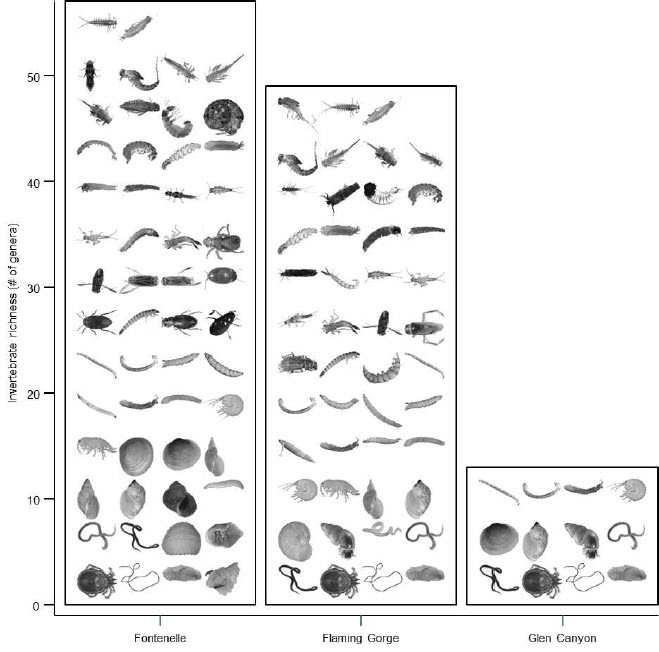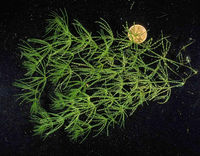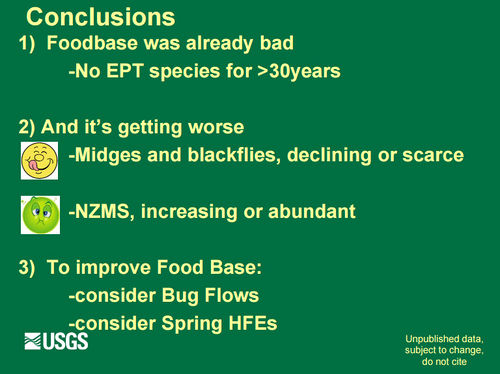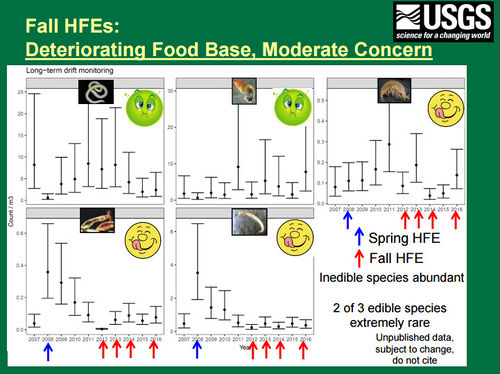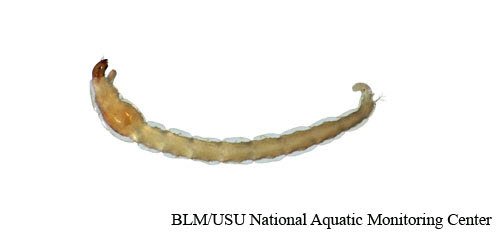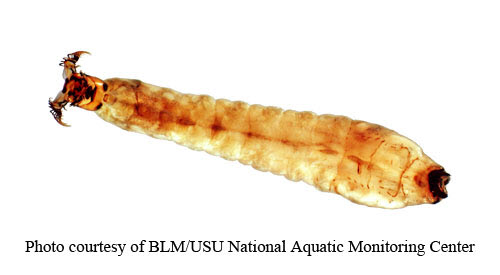FOOD BASE
|
|
The Aquatic Food Base below Glen Canyon DamThe most abundant aquatic macroinvertebrates within the Glen Canyon reach include Gammarus lacustris (an introduced non-native amphipod), midges (order Diptera, family Chironomidae), snails (Physella sp. and Fossaria obrussa), segmented worms (especially Lumbricidae and Lumbriculidae) and other aquatic worms (Naididae and Tubificidae), fingernail clams in the family Sphaeriidae (Pisidium variable and P. walkeri), and the planarian Dugesia spp. (Blinn et al. 1992; Stevens, Shannon et al. 1997). Prior to 1995, snails were infrequently observed, but have since increased in abundance due to invasion by the non-native New Zealand mudsnail (Potamopyrgus antipodarum) (Valdez and Speas 2007; Cross et al. 2010). The mainstem Colorado River in Glen and Grand Canyons supports very few species or individuals of native mayflies, stoneflies, or caddisflies because of a combination of stressors, including altered temperature regimes and a pronounced varial zone (Stevens, Shannon, et al. 1997; Kennedy et al. 2016). Some tributaries of the Colorado River, along with backwaters and off-channel ponds, have higher diversity and densities of mayflies, stoneflies, and caddisflies compared to the mainstem. (2018 Expanded Non-Native Aquatic Species Management Plan EA) Desired Future Condition for the Aquatic Food BaseThe aquatic food base will sustainably support viable populations of desired species at all trophic levels. Assure that an adequate, diverse, productive aquatic foodbase exists for fish and other aquatic and terrestrial species that depend on those food resources. |
| EPT as Biologic Indicators of Stream Condition |
Algae and Aquatic Macrophytes |
Aquatic Macroinvertebrates |
|---|
